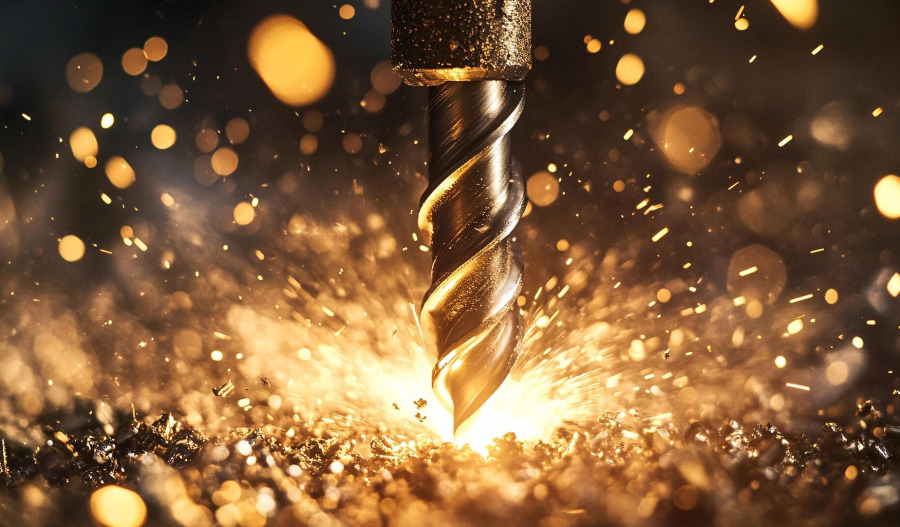Azzet reports on three ASX stocks with market-moving updates to share today.
BHP lifts higher after posting record FY25, weaker outlook
Despite posting record copper and iron ore production for FY25 – at the higher end of guidance - BHP’s (ASX: BHP) subdued outlook for FY26 underwhelmed investors this morning, with the share price struggling to move 2% higher at the open.
And despite receiving some recent welcome updraft from higher iron ore prices, and signs of early rotation out of bank stocks [back into resources], the big miner’s share price is struggling to trade over $40 a share and remains around 12% down on its 12-month high of $45.50.
What also weighed on market sentiment this morning were revelations that cost and schedule blowouts at the Jansen mine – the miner’s major push into Canadian potash – are now costing up to $US1.7 billion ($2.6 billion) more than previously expected.
Management attributed cost and schedule blowouts on “design and scope changes” to inflationary pressures and “lower productivity outcomes.”
While BHP originally expected to spend US$5.7 billion building the first stage of the Jansen mine in the province of Saskatchewan, complete capex is now expected to rise to between US$7 billion and US$7.4 billion.
The mine remains on track to be opened in 2027. However, the expected surge in potash prices in the absence of Russian supply has as yet failed to materialise.
This is one of the myriad reasons why BHP is understood to be second guessing a former decision to accelerate an expansion of Jansen.
With additional potash supply coming into the market, BHP has told the market it may defer delivery of the “stage 2” expansion to June 2031.
While BHP's investment in potash was all about reducing the miner’s reliance on the WA-based iron ore division, the miner has only spent US$400 million of the US$4.9 billion committed to Jansen’s second stage.
Meanwhile, for the year ending 30 June copper production surged 8% to a record 2.01 million tonnes, due largely to strong performances at Escondida in Chile, which saw a 16% uplift, and record output from Spence.
WA Iron Ore also achieved peak production of 290 million tonnes, with BHP noting that South Flank exceeded nameplate capacity in its first full year of operation, while the ramp-up of the second concentrator at Samarco ahead of schedule, also contributed to its record win.
Meanwhile, BHP guided FY26 copper of 1.80-2mt, while iron ore is forecast at 258mt-269mt.
The average realised price for copper of US$4.25 per pound was 7% higher than FY24, while iron ore per wet metric tonne fell 19% to US$82.13.
Commenting on today’s update BHP CEO Mike Henry, told the market that record iron ore and copper production highlights the company’s strength and its ability to deliver growth and returns to shareholders despite global volatility.
“Copper and steel demand have benefited from a sharp acceleration in renewable energy investment, electricity grid build out, strong machinery exports and EV sales,” he said.
“While slower economic growth and a fragmenting trading system remain potential headwinds, stimulus efforts by China and the U.S. would help to mitigate the near-term impact.”
Going forward, Henry expects China’s 15th 5-year plan to provide more visibility into its policies to sustain longer-term growth and development.
Group capital expenditure for FY26 and FY27 will remain at US$11 billion.
BHP expects negative earnings of US$200-US$300 million from its mothballed WA nickel operations and plans to review the decision to temporarily suspend operations by February 2027.
BHP has a market cap of $203.3 billion. The share price is down 6% in one year and up 7.4% in the last month.
The stock’s shares appear to be in a near-term downtrend confirmed by its 20-day moving average.
Consensus is Moderate Buy.
Mesoblast rallies on fist revenue flow from Ryoncil
Shares in Mesoblast (ASX: MSB) were up over 28% heading into lunch after the large-cap pharmaceutical company updated the market on its initial revenues resulting from sales of its Ryoncil (remestemcel-L) product in the U.S. which was approved by the U.S. Food and Drug Administration in December.
Today’s share price jump follows 10.6% the stock experienced in June without the support of any price-sensitive news.
What excited the market today was Mesoblast’s reported US$13.2 million ($20.3 million) in gross revenue from Ryoncil sales from the time it was launched on 28 March to 30 June.
Mesoblast has on-boarded more than 25 transplant centres since product launch and expects during this quarter to complete the on-boarding process across all 45 priority transplant centres that account for around 80% of U.S. paediatric transplants.
U.S. federal Medicaid coverage by Centres for Medicare and Medicaid Services (CMS) for Ryoncil is in place and mandatory fee-for-service Medicaid coverage in all U.S. states became effective from 1 July.
Mesoblast also received several exclusivity arrangements over the June quarter to protect the intellectual property of Ryoncil.
The company also posted US$1.6 million in revenue from royalties on sales of TEMCELL – a stem cell therapy for treating a complication that arises from bone marrow transplants – sold in Japan.
Meanwhile, the group reported US$16.6 million in net operating spend for the quarter and ended the three-month period with US$162 million in cash.
“We are pleased with the commercial launch activities of Ryoncil® in the first quarter post-launch and look forward to updating on the current quarter's progress now that mandatory state CMS coverage has become effective as of July 1, and we complete onboarding of the remaining major U.S. transplant centres,” said Mesoblast CEO Dr. Silviu Itescu.
Today’s market update follows JPMorgan Chase & Co becoming a substantial holder in the stock after acquiring 5% voting power as of July 15, 2025.
Mesoblast has a market cap of $2.9 billion; the share price is up 110% on one year and down 24% year to date.
The stock’s shares appear to be in a near-term downtrend confirmed by its 20-day moving average.
Consensus is Strong Buy.
Askari Metals catapults after significant discovery at its Nejo Gold Project
Shares in Askari Metals (ASX: AS2) were 62% in early afternoon trade after the Southern African-focused exploration company announced a significant discovery at its Nejo Gold Project in Ethiopia, revealing high-grade copper mineralisation at the Katta Target a key area within the project.
Historical drilling results have demonstrated substantial copper intercepts, highlighting the project's potential as a dual copper and gold exploration asset.
The company’s historical exploration data compilation program revealed the Katta Target, located within the 1,174-square-kilometre Nejo Gold Project, has yielded promising intersections, adding to the growing portfolio of copper and gold resources within the project and setting the stage for modern exploration to fully unlock its value.
Historic drilling at the Katta target has identified substantial copper mineralisation including:
- 14.33 metres @ 3.2% copper (Cu) at a depth of 25.3 metres (UNDP_03)
- 35.51 metres @ 0.82% Cu from 152.55 metres depth (UNDP_04)
In addition to these high-grade intersections, historic exploration has uncovered six copper-bearing gossans at the Katta 2 Target.
One of these gossans has a strike length of more than 600 metres, remains open along strike and at depth, and is up to 30 metres wide.
Commenting on the high-grade copper mineralisation at the Nejo Gold Project, executive director Gino D’Anna told the market that despite these high-grade intercepts across wide thicknesses, there is an absence of systematic exploration, which represents is a key opportunity to unlock the potential of these targets through modern, systematic and focused exploration.
“Nejo is a district-scale advanced brownfields gold and copper project and offers everything we look for in a flagship asset — scale, high-grade gold and copper upside, proven mineralisation, and proximity to major gold operations on a globally significant greenstone belt,” he said.
“With a large-scale landholding, extensive historical data, and clear targets, we have the ingredients to fast-track Nejo toward a maiden JORC resource.”
Assuming the miner can unlock the full potential of this project and deliver meaningful exploration milestones in the near term, D’Anna expects Askari to emerge as a major African Gold and Copper Developer.
Askari now plans follow-up drilling, leveraging modern techniques to expand upon these initial results.
Askari Metals has a market cap of $5.2 million; the share price is down around 70% in one year and 116% in the last month.
The stock’s shares appear to be in a near-term rally within a longer-term bearish trend.
Consensus does not cover this stock.
This article does not constitute financial or product advice. You should consider independent advice before making financial decisions.



